17 Types of Cactus House Plants (With Pictures)
-
Pete Ortiz
- Last updated:
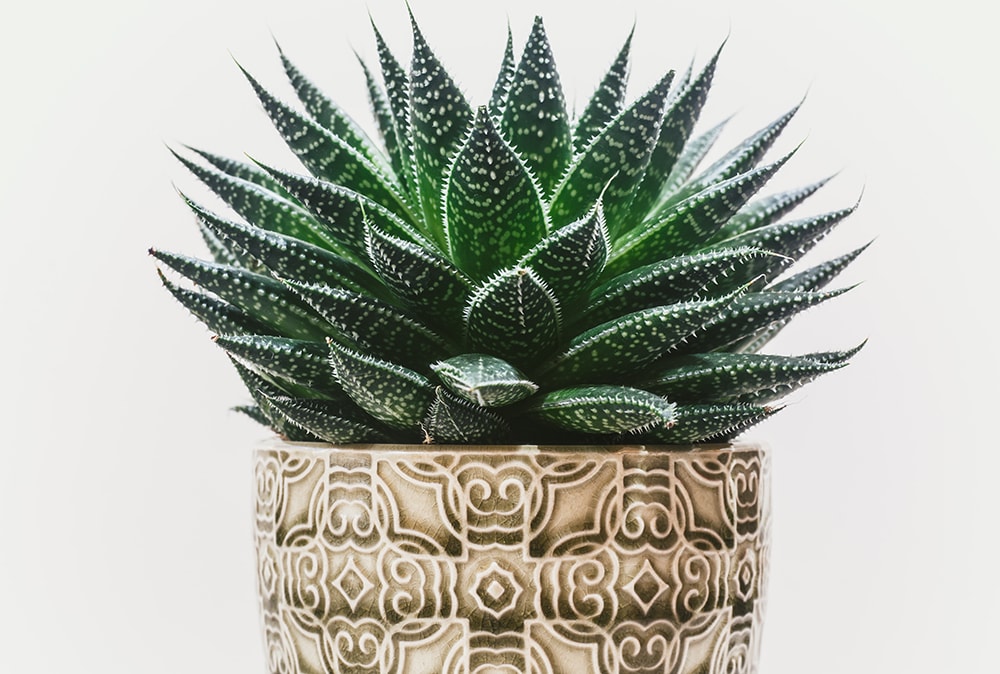
Did you know that there are over 1,500 species of cactus across the world? Many of these plants are native to dry desert climates.
In the US, you can come across numerous different types of cacti. While many grow in the wild, these can also be found in nurseries. These cacti make amazing houseplants. They vary in terms of height. In this list there are types of cacti that you can grow as houseplants.
The 17 Different Types of Cactus House Plants
1. Bunny Ear Cactus (Opuntia microdasys)
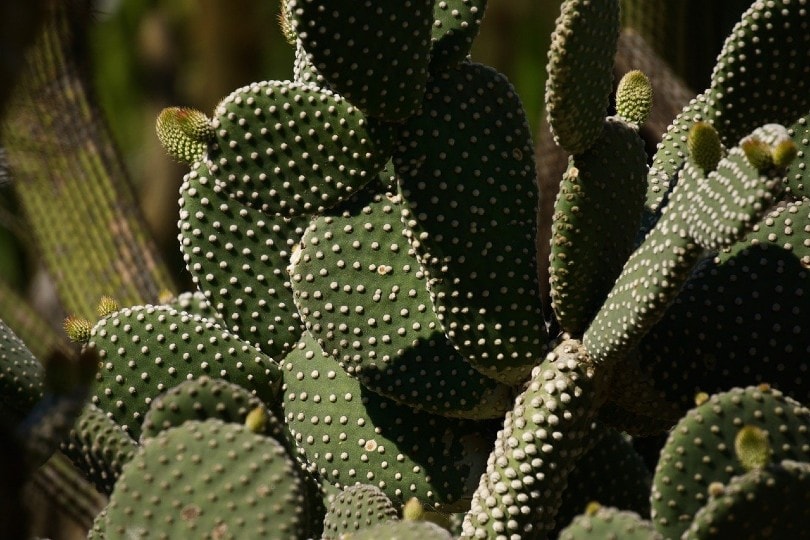
| Height: | 1.3 to 2 ft |
| USDA Hardiness Zone: | 9a through 11b |
| Flowering Season: | Spring from February to April |
| Bloom Colo: | Yellow |
Have you ever seen a cactus that resembles bunny ears? Well, among the small houseplants you can get is the adorable bunny ear cactus (angel wings cactus). This plant is native to Mexico. Its cuteness shouldn’t take away from the fact that it has sharp spines all over.
The bunny ear cactus is a low-maintenance plant that thrives out in the wild and also indoors. It loves bright and direct sunlight all year, so pick a spot that can deliver such. Since this is a dry-climate plant, it won’t require lots of moisture because it is drought-tolerant.
2. Baioensis Cactus (Euphorbia baioensis)
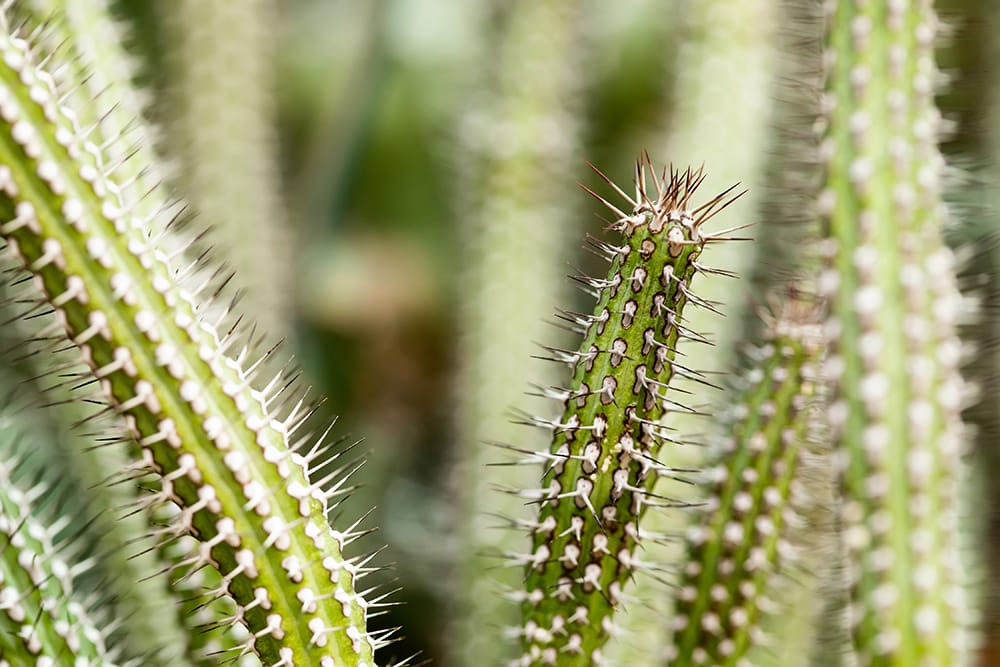
| Height: | 0.5 to 1.5 ft |
| USDA Hardiness Zone: | 10b to 11b |
| Flowering Season: | Spring to summer |
| Bloom Colo: | Pink |
At times a small cactus can resemble a shrub with many branches. This is exactly how the baioensis cactus looks like. Its stems are bright-green and start branching out right at the base of the plant. It has gray spines that appear red at the tip.
This plant survives dry climatic conditions out in the wild. Therefore, it’s not fussy when you grow it indoors. In fact, all the baioensis needs is the right cactus mix, minimal watering when the soil is dry, and a spot that gets lots of bright sunlight.
- Related Read: 30 Euphorbia Cactus Types
3. Rat’s Tail Cactus (Aporocactus flagelliformis)
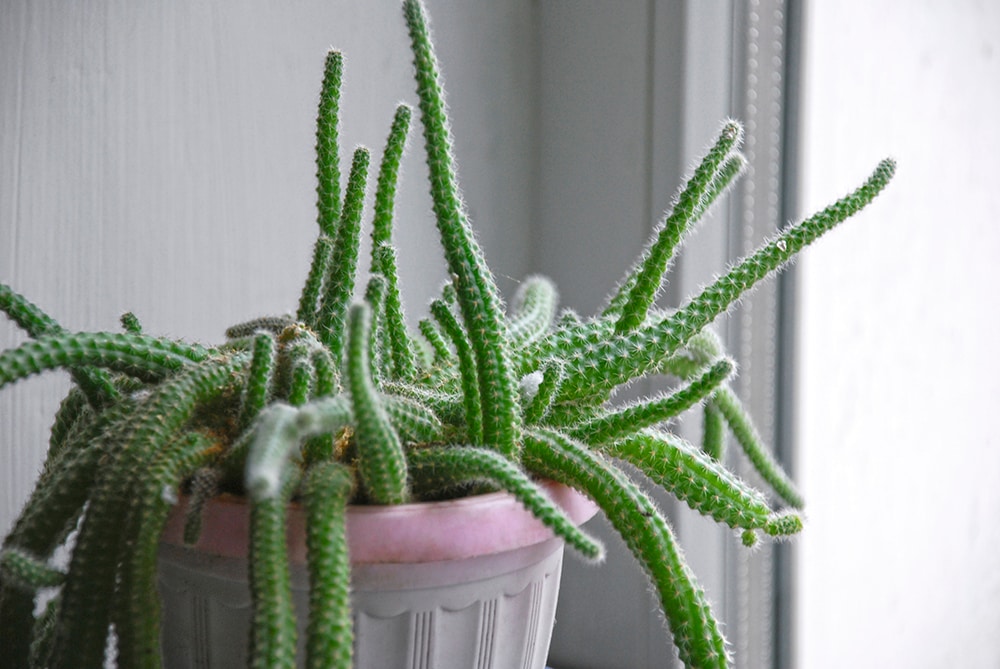
| Height: | 4 ft |
| USDA Hardiness Zone: | 10 and 11 |
| Flowering Season: | Spring from February to April |
| Bloom Colo: | Violet-red |
Imagine a unique cactus that grows to resemble the tail of a rat. That’s the rat’s tail cactus, native to Central America and Southwestern Mexico. This amazing plant has long showy trailing stems and can grow on the ground or on tree trunks in the wild.
At home, it’s possible to have the rat’s tail cactus as a houseplant. It requires minimal attention and is a drought-tolerant plant. Place the cactus in an area that gets bright direct light all year for optimum growth. Also, plant it in a lightweight cactus mix with good drainage, and water the soil only when it dries up.
4. Powder Puff Cactus (Mammillaria bocasana)
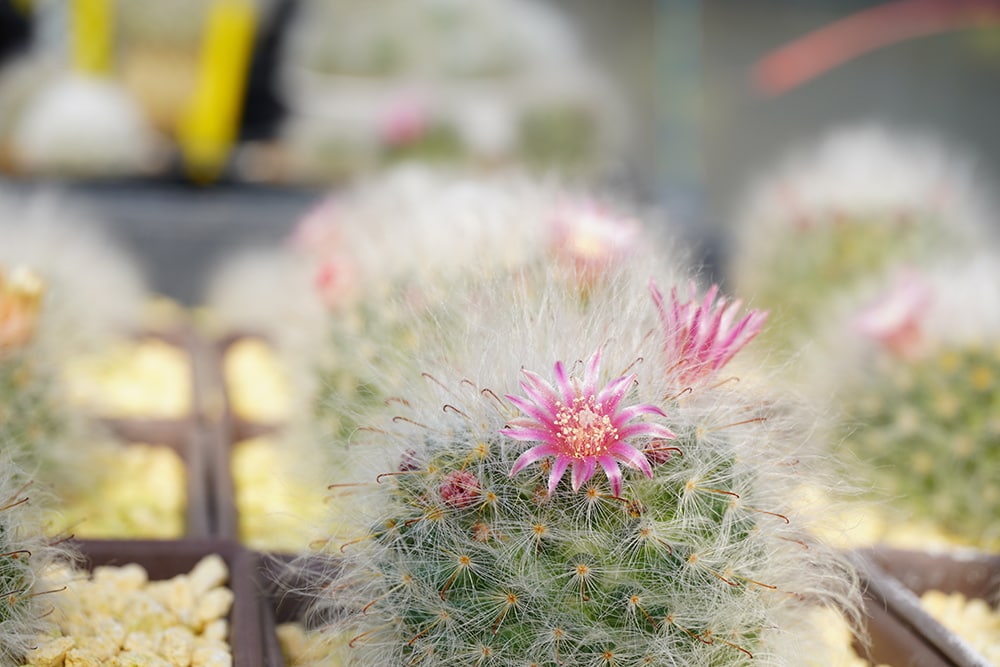
| Height: | 5 inches |
| USDA Hardiness Zone: | 9a through 11b |
| Flowering Season: | Summer |
| Bloom Colo: | White, pink, and red |
Northern parts of Mexico are home to the powder puff cactus. This is a protected species that is prohibited from being picked in the wild. It grows to create a large mound covered by many white-hairy spines. It bears some red cylindrical fruits in summer.
While you can’t take it from the wild to your home, you can find powder puff cacti in a nursery. This is a perfect houseplant to get since it requires minimal care. It prefers well-draining acidic sandy soil and lots of bright light. Place it in a warm spot during the colder months and water sparingly.
5. Lady Finger Cactus (Mammillaria elongata)
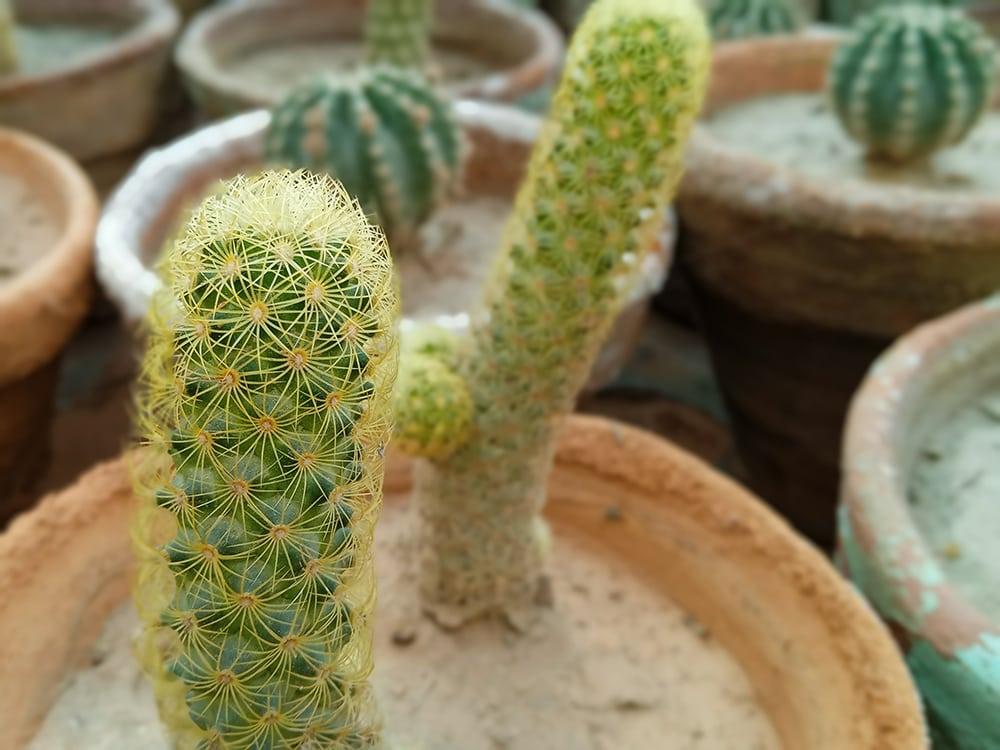
| Height: | 8 inches |
| USDA Hardiness Zone: | 9a through 11b |
| Flowering Season: | Spring |
| Bloom Colo: | White and yellow |
As a beginner who wants to have a collection of small houseplants, the lady finger cactus is a good choice. This plant is native to central Mexico. It grows as dense clusters out in the wild. Each plant has long oval stems with harmless spines.
This cactus grows not too tall and has a bright green body. When growing indoors, it’s better to place it where there’s lots of bright sunlight. It will require a good cactus mix with lots of sand, gravel, and perlite. Remember to keep watering at a minimum.
6. Crimson Crown Cactus (Rebutia deminuta)

| Height: | 5 inches |
| USDA Hardiness Zone: | 9a through 11b |
| Flowering Season: | Spring |
| Bloom Colo: | Crimson |
Another great beginner-friendly small cactus is the crimson crown cactus. This adorable cactus can grow as a single plant or have many branches forming from the base. It has dark-green and shiny stems that appear more cylindrical as it matures.
Growing the crimson crown cactus indoors is easy since it already tolerates harsh desert climates. Choose well-draining soil such as sand and plant it in a small pot. Watering must be kept at a minimum since any standing moisture can cause the plant to rot.
7. Silver Ball Cactus (Parodia scopa)
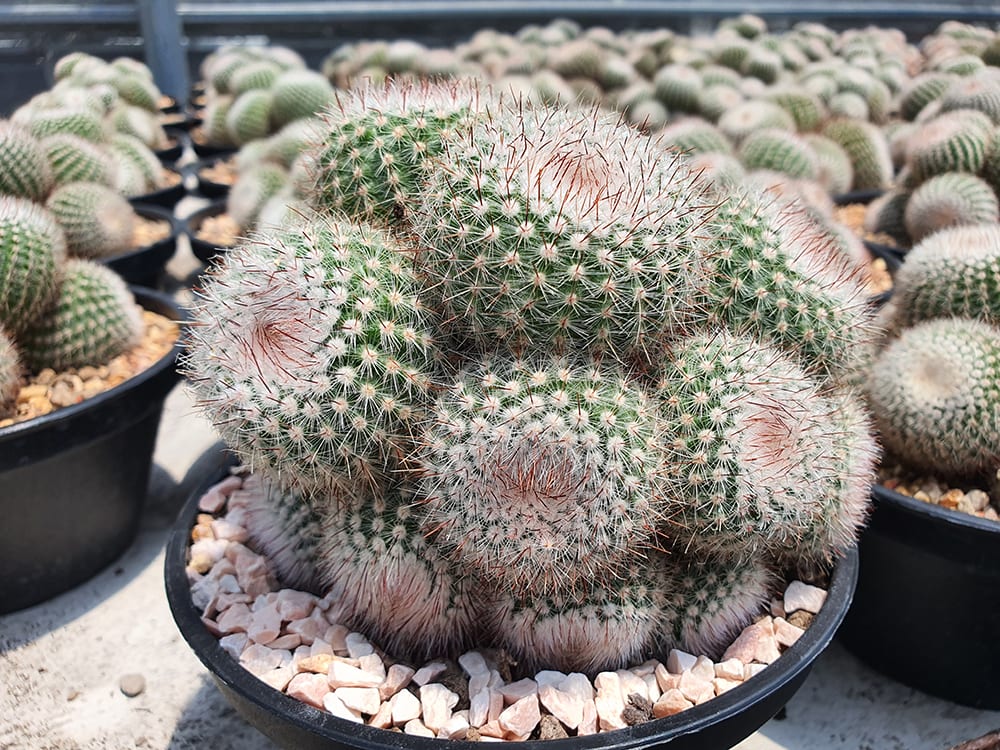
| Height: | 1 ft |
| USDA Hardiness Zone: | 9b through 11b |
| Flowering Season: | Summer |
| Bloom Colo: | Yellow |
Some cacti grow into ball or round-shaped plants. A good example is the silver ball cactus which resembles a literal ball and has a spiny crow at the top. This crown has some white fluff where the flowers appear when the cactus blooms.
Since the cactus is small with a cylindrical shape, it’s prone to rot. This is why it’s important to avoid watering from the top and also plant it in well-draining soil. The best way to encourage it to bloom as an indoor plant is by reducing watering for some time during winter.
8. Strawberry Hedgehog Cactus (Echinocereus enneacanthus)
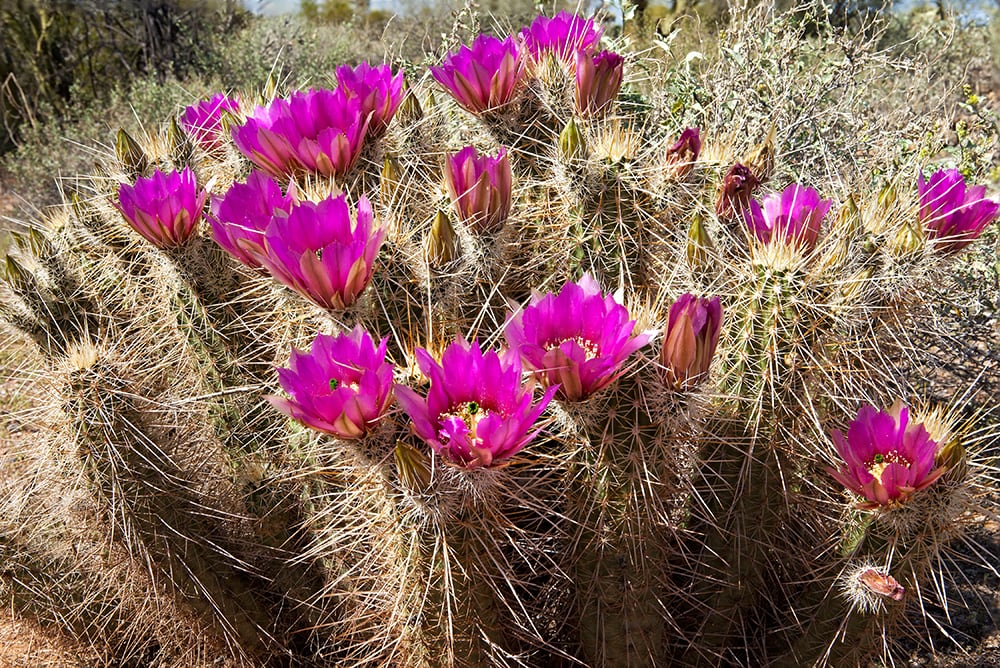
| Height: | 1 ft |
| USDA Hardiness Zone: | 10 through 11 |
| Flowering Season: | Early summer |
| Bloom Colo: | Purple |
Some cacti grow to form a clump. A good example of this is the strawberry hedgehog cactus that forms many green erect stems with cylindrical bodies. These stems have brownish spines and begin forming at the base of the cactus to form a tight clump.
The good news is this is not only a good plant to grow outside in a dry rocky garden, but you can add it to your houseplant collection. It requires minimal watering and can even thrive when left to dry up completely. It requires well-draining sandy soil and bright direct light.
9. Star Cactus (Astrophytum asterias)

| Height: | 2 to 6 inches |
| USDA Hardiness Zone: | 9a through 11b |
| Flowering Season: | Summer and fall |
| Bloom Colo: | Yellow, orange, red |
In the deserts of Texas and Mexico, you can find the star cactus growing in the wild. This small plant grows in a disc-shaped manner and doesn’t have spines. Instead, it has ribs, and in the middle of each rib, you find wooly areolas.
This is a slow-growing cactus that you can have in your home among other indoor plants. It requires minimal care, so only water when the soil is dry to avoid root rot. In addition, ensure the soil you use is well-draining and place the plant where it gets lots of bright light.
10. Feather Cactus (Mammillaria plumosa)

| Height: | 5 inches |
| USDA Hardiness Zone: | 9a through 11b |
| Flowering Season: | Spring |
| Bloom Colo: | Ivory, off-white, and pink |
Imagine the most adorable and fluffy-looking cactus that you’ve ever come across. That’s the best way to describe the feather cactus. But don’t let the fuzzy appearance fool you for underneath the puff are sharp spines cover the entire cactus.
Indoors, it’s best to have it in a spot with ample bright sunlight and only partial shade. It’s not a cold-hardy plant, so adding some warmth to it during winter is a good idea. Only water it when necessary, but ensure you always leave the soil to dry out.
11. Old Lady Cactus (Mammillaria hahniana)
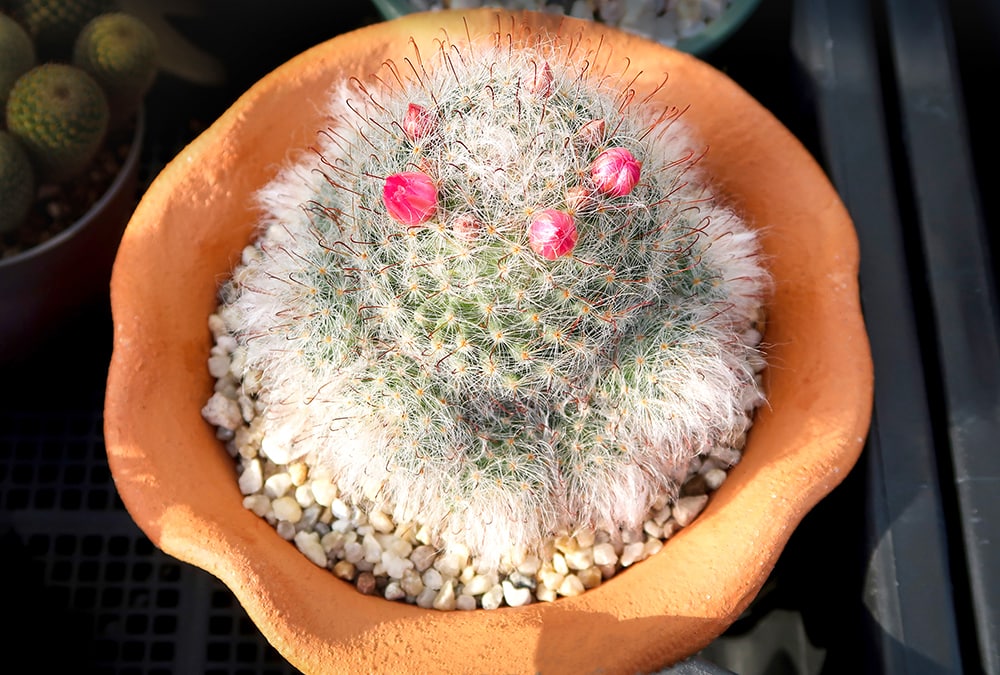
| Height: | 10 inches |
| USDA Hardiness Zone: | 9a through 11b |
| Flowering Season: | Late spring |
| Bloom Colo: | Purplish red |
The old lady cactus is a stunning plant native to Central Mexico. It grows attractive stems, but these are covered with sharp spines from top to bottom. It doesn’t form branches, unlike many other types of cacti.
The lone spherical stem can become a fantastic addition to your home as a houseplant. During the growing season, you can water sparingly and also add some fertilizer. However, it’s better to cut back on both when winter comes around. Only plant in well-draining sandy soil or cactus mix.
12. Moon Cactus (Gymnocalycium mihanovichii)
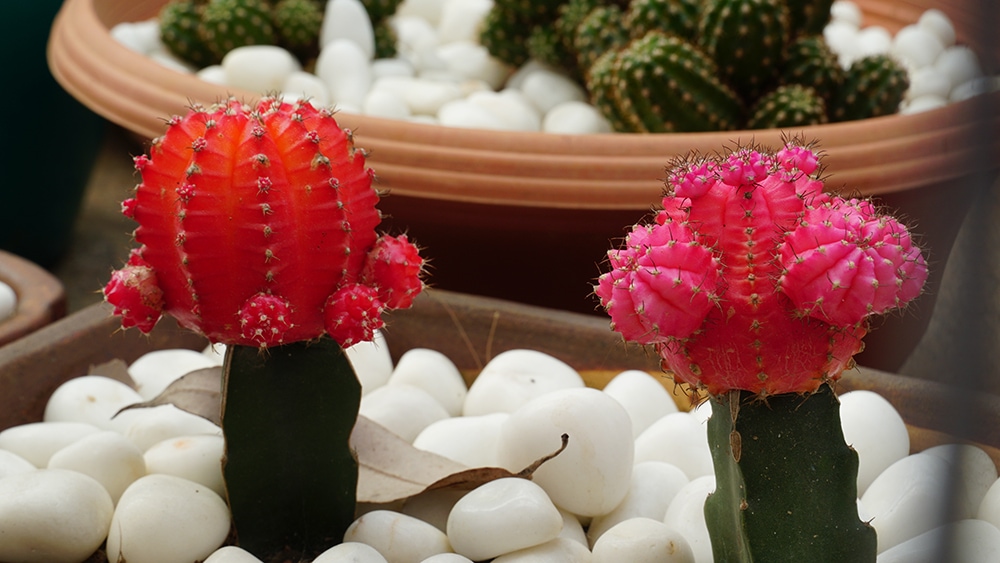
| Height: | 1 ft |
| USDA Hardiness Zone: | 11 through 12 |
| Flowering Season: | Late spring to early summer |
| Bloom Colo: | Yellow, orange, red, purple, and white |
The moon cactus is also known as the hibotan cactus. This species of cacti is native to South America and is among the most diverse plants. It comes in different sizes, textures, colors, and shapes. Such diversity means you can create a whole collection at home.
As a houseplant, the moon cactus requires near desert-like conditions. This means you have to grow it in well-draining sandy soil or cacti mix. Also, it’s best to place it where it gets full sun and sufficient warmth. Lastly, only water sparingly when the soil is dry.
13. Fishbone Cactus (Epiphyllum anguliger)
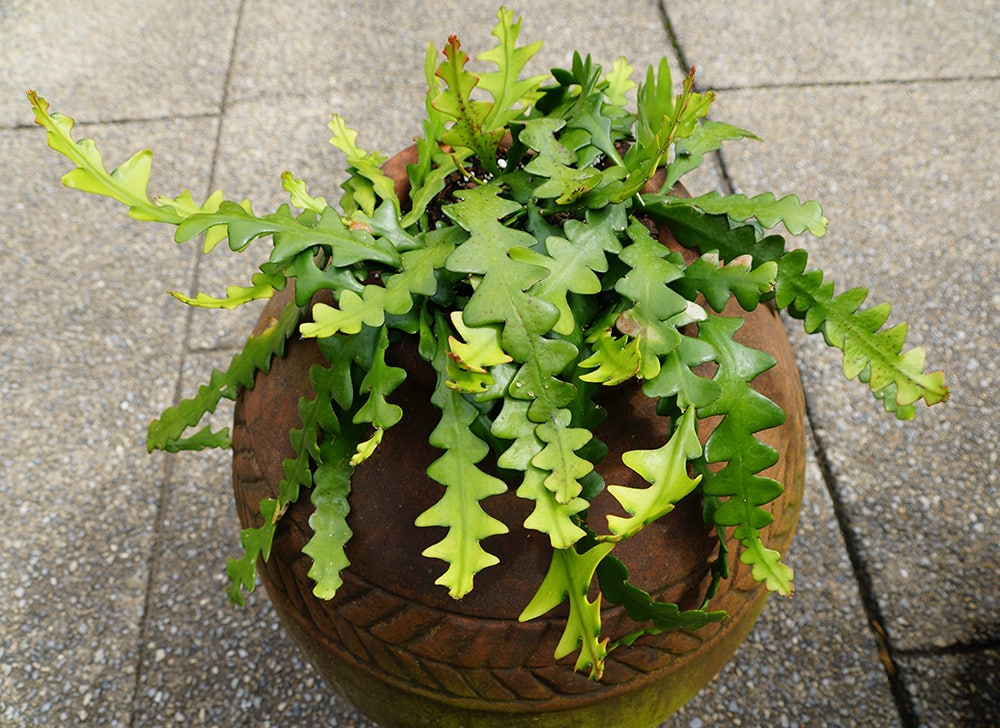
| Height: | 6 inches |
| USDA Hardiness Zone: | 10a through 12b |
| Flowering Season: | Late summer to fall |
| Bloom Colo: | Yellow, white |
The fishbone cactus is a great addition to your home if you want a low-light plant. It’s native to Mexico and thrives well in different conditions that won’t favor other cacti. In fact, it’s among the few cacti that thrive in moist and humid conditions.
This cactus will require a few hours of indirect light when growing indoors. But, it still grows in poor lighting. In addition, the plant requires well-draining soil that’s a bit moist. Let it dry out first before you water the cactus again.
14. Christmas Cactus (Schlumbergera x buckleyi)
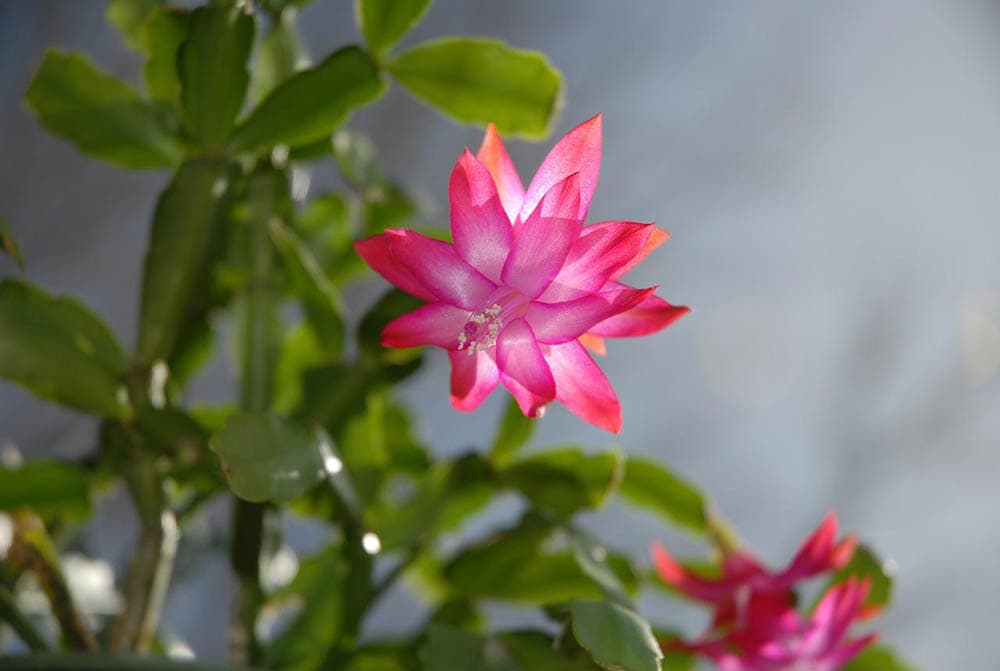
| Height: | 6 inches to 1 ft |
| USDA Hardiness Zone: | 10 through 12 |
| Flowering Season: | Late fall, early winter |
| Bloom Colo: | Pink, red, magenta, white or purple |
One of the most common cactus plants in many homes is the Christmas cactus. While other cacti are native to desert climates, the Christmas cactus originates from the tropical rainforests of Brazil. This is why it will require regular watering and lots of humidity to keep growing.
The Christmas cactus, also known as the holiday cactus, loves an area with partial shade or where it can receive diffused light. Full sunlight in summer can damage the plant. Also, ensure to plant it in well-draining rich soil.
15. Easter Cactus (Rhipsalidopsis gaertneri)

| Height: | 2 ft |
| USDA Hardiness Zone: | 10 through 11 |
| Flowering Season: | Winter, spring |
| Bloom Colo: | Pink, red, orange, purple, and white |
The Easter cactus is a beautiful small plant that can grow well in cold climates. In fact, this cactus requires ample shade and can’t tolerate bright direct sunlight. It’s better to grow it in a position that receives indirect light with some shade.
The cactus does well in rich, well-draining soil. Ensure the potting soil is loose as compacting can cause the plant lots of harm. This is a high-maintenance house plant that needs frequent watering. But ensure you don’t leave it sitting on water for too long.
16. Snowball Cactus (Mammilloydia candida)
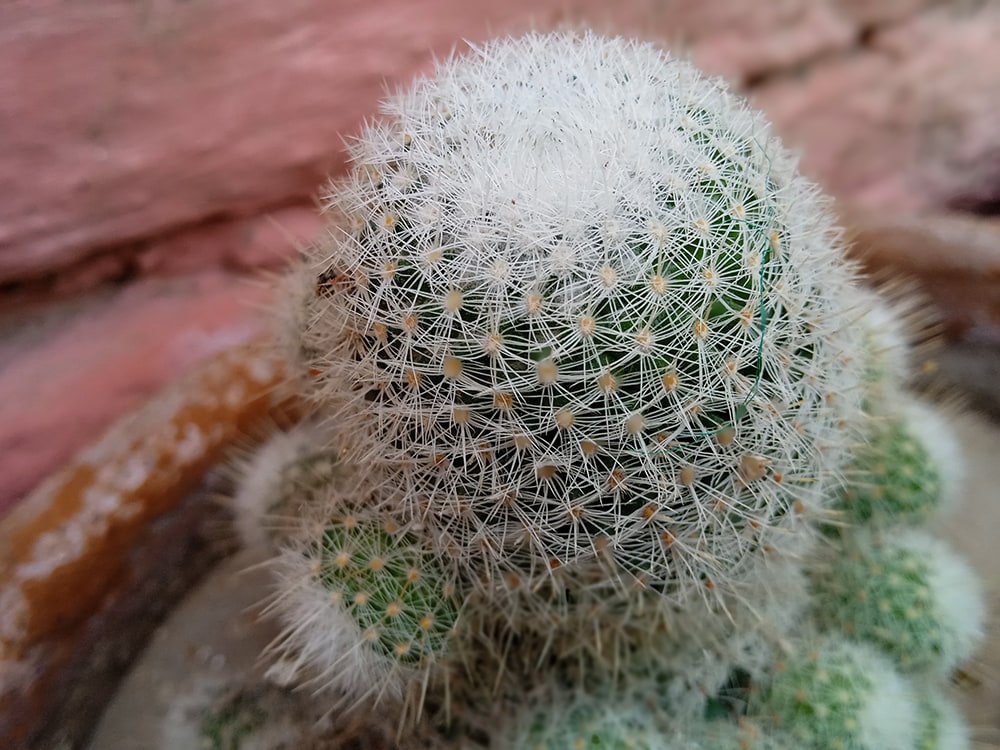
| Height: | 1 ft |
| USDA Hardiness Zone: | 9a through 10b |
| Flowering Season: | Spring, Summer |
| Bloom Colo: | Pink, Yellow |
The snowball cactus is a gorgeous semi-desert plant. The lovely nature of this plant makes it a favorite for folks who want cacti as houseplants. It’s a low-maintenance green-lime cactus with some level of cold hardiness.
On the plant are hundreds of white spines that create a snowball effect on it. The cactus thrives in bright indirect sunlight when indoors and requires well-draining soil with lots of grit. Water only when the soil is completely dry.
17. Chin Cactus (Gymnocalycium mihanovichii)

| Height: | 7 inches |
| USDA Hardiness Zone: | 5 through 8 |
| Flowering Season: | Mid to late spring |
| Bloom Colo: | Pink, Red, White, Salmon |
Another example of a perfect houseplant is the chin cactus. It is easy to grow and care for, and it doesn’t have many requirements for blooming.
Plant the chin cactus in well-draining soil with ample perlite, sand, or gravel. This plant loves bright indirect light and isn’t cold-hardy. If you place it near a window, ensure you close it when there’s a frost.
Conclusion
Having some cacti plants in your home can be amazing since they add diversity to a collection of houseplants. The good news is that no matter the height, a cactus plant is low-maintenance and easy for a beginner to care for at home.
All you need to do is get the right pots and soil. There’s the option of using well-draining sandy soil or cactus mix. After planting, place it where it gets full sun and water sparingly. It’s best to cut down watering as much as possible during winter.
Featured Image Credit: Kyaw Tun, Unsplash
Contents


